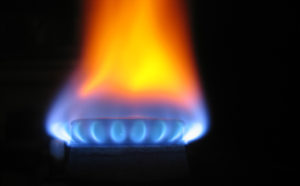 Natural gas slid on Monday despite an upcoming warm-up across the majority of the US as weak weather systems will keep temperatures from becoming excessively hot ahead of what is expected to be a much larger than average inventory build to be reported on Thursday.
Natural gas slid on Monday despite an upcoming warm-up across the majority of the US as weak weather systems will keep temperatures from becoming excessively hot ahead of what is expected to be a much larger than average inventory build to be reported on Thursday.
Natural gas for delivery in October traded 1.88% lower at $2.664 per million British thermal units at 08:21 GMT, shifting in a daily range of $2.683-$2.662. The contract rose 1.9% on Friday to $2.715, closing the week 0.7% higher.
Natural gas demand in the US will be higher this week compared to last, overall moderate compared to normal, but locally high in some regions. High pressure will strengthen across the entire US, apart from the West, after cooler conditions east of the Rockies curbed cooling demand last week. However, weak weather systems will prevent the eastern ridge from becoming too hot, NatGasWeather.com said, keeping highs over the Midwest, Mid-Atlantic and Northeast in the mid-upper 80s.
Texas and the southern Plains will be a bit hotter as temperatures max out in the low-mid 90s, while tropical storm Erika fizzled into a weak circulation over the weekend and will play out to the bearish side, bringing cooler readings and rains to Florida and the Southeast. Meanwhile, the western US will cool this week as unseasonably strong Pacific systems track inland, including California.
Next week will start with high pressure continuing to dominate much of the southern, central and eastern US, while the West remains cooler, according to NatGasWeather.com. However, localized weather systems will bring showers and cooling, keeping highs checked, and as the week progresses, the north-eastern US will gradually trend cooler as the summer draws to an end and seasonal cool blasts attempt to push into the country.
Temperatures
According to AccuWeather.com, highs in New York will peak at 90-94 degrees Fahrenheit through September 5th, compared to the average 79-80, followed by a gradual drop to the low 80s and upper 70s over the following seven days. Chicago will max out at 84-88 degrees this week, above the usual 79-80, before afternoon highs drop to as much as 72 degrees on September 9th.
Down South, readings in Houston will reach 91-93 degrees through September 7th, slightly above the average 90-91, followed by a drop to the upper 80s. On the West Coast, Los Angles will peak at 81 degrees tomorrow, 4 below usual, and temperatures will remain slightly below seasonal for the rest of the week.
Inventories
The Energy Information Administration reported on Thursday that US natural gas inventories rose by 69 billion cubic feet in the week ended August 21st, a bearish number exceeding analysts’ median estimate of 59 bcf and the five-year average gain for the week of 61 bcf. This brought the total gas held in US storage hubs to 3.099 trillion cubic feet, expanding a surplus over the five-year average of 3.011 trillion to 2.9% from 2.7% a week earlier.
This Thursdays report will bring a much higher gain in stockpiles as last weeks cooler weather across the north-eastern US is factored in. Early estimates pin the build at about 90 bcf, well above the five-year average inventory gain for the week ended August 28th of 60 bcf and a 79-bcf increase a year earlier.
This weeks warm-up, however, will lead to a narrower inventory gain for the September 10th report, but the mentioned localized cooler weather systems will keep cooling demand checked, resulting in another larger-than-average build. Initial estimates point to a stockpiles increase of about 80 bcf for the week ended September 4th, 17 bcf above the average, while supplies grew by 90 bcf during the comparable period a year earlier.
Pivot points
According to Binary Tribune’s daily analysis, October natural gas futures’ central pivot point stands at $2.701. In case the contract penetrates the first resistance level at $2.739 per million British thermal units, it will encounter next resistance at $2.762. If breached, upside movement may attempt to advance to $2.800 per mBtu.
If the energy source drops below its S1 level at $2.678 per mBtu, it will next see support at $2.640. In case the second key support zone is breached, the power-station fuel’s downward movement may extend to $2.617 per mBtu.
In weekly terms, the central pivot point is at $2.694. The three key resistance levels are as follows: R1 – $2.746, R2 – $2.778, R3 – $2.830. The three key support levels are: S1 – $2.662, S2 – $2.610, S3 – $2.578.




